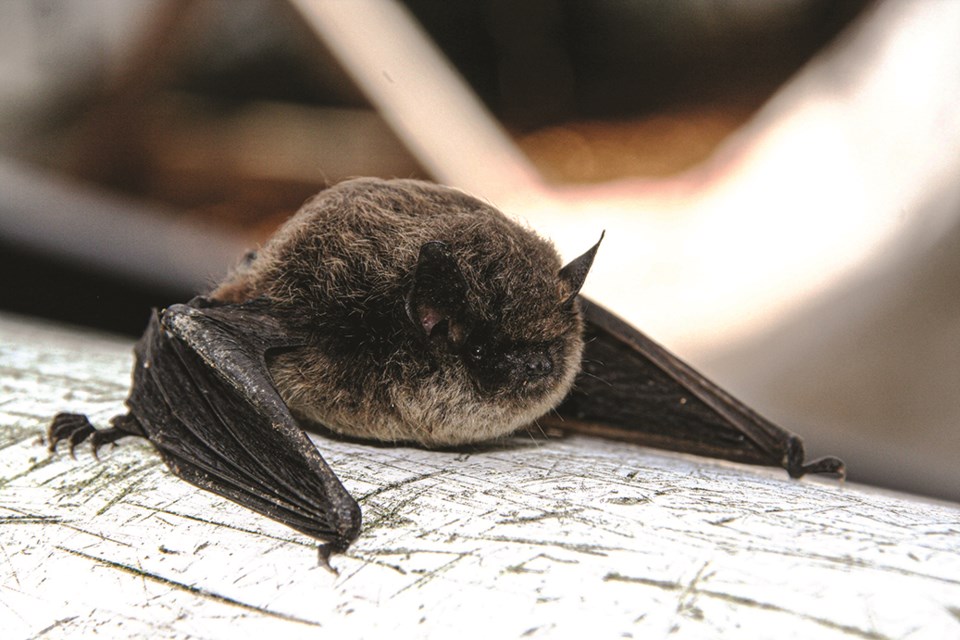Local bats are threatened by disease and the Sunshine Coast Wildlife Project is asking the community for help. White-nose syndrome (WNS) is a fungal disease that is harmless to humans but attacks bats during their winter hibernation, appearing on their wings and faces to give an appearance of a white nose. Bats often wake to clean the fungus from their skin, using up valuable energy reserves and leading to death from hypothermia and starvation.
Across North America, WNS has killed millions of bats, and populations of some species have declined by more than 90 per cent. The disease is now spreading in Washington State and biologists believe its arrival in B.C. is imminent. Though there is no cure for WNS, several promising treatment options are being developed, and it may be possible to mitigate the effects of this wildlife health crisis.
Sunshine Coast residents are asked to please report any winter bat sightings and any sick or dead bats by emailing [email protected] or calling 604-989-1007. Bat carcasses can be tested for WNS, and activity reports may identify regions with unusual activity.
Some healthy bats are also occasionally active in winter, and some bats hibernate in woodpiles, sheds, or under house trim. These sleeping bats should be left alone — keep your distance, snap a photo, and report it. If you must move a bat, remember to never touch a bat with your bare hands.
Bat stewardship efforts are led by the Sunshine Coast Wildlife Project in collaboration with the BC Community Bat Program and Province of BC, and with funding from the Habitat Conservation Trust Foundation, Forest Enhancement Society of BC, Habitat Stewardship Program, Gencon Foundation, and the Fish and Wildlife Compensation Program. For more information about how to help bats, please visit bcbats.ca.



